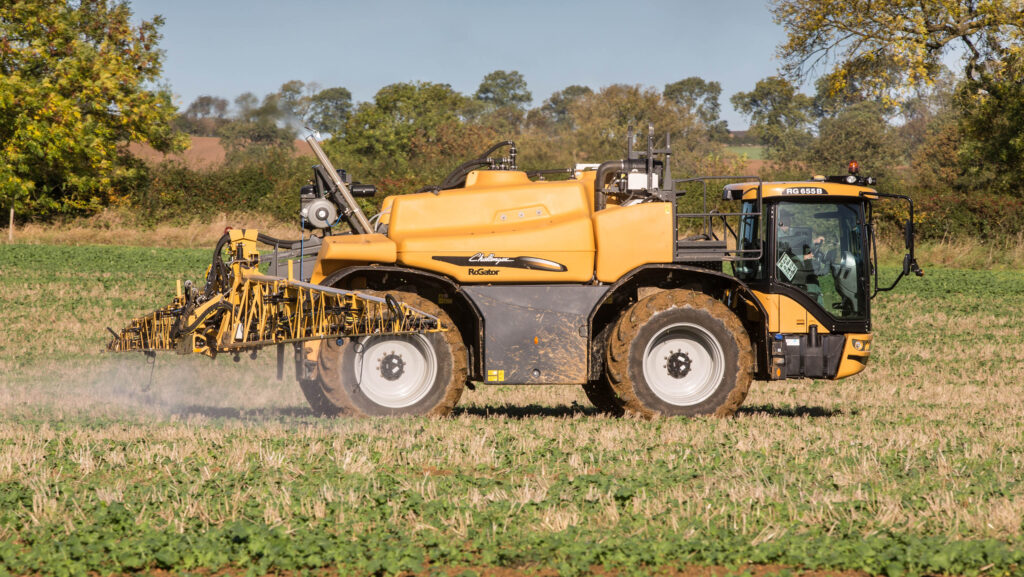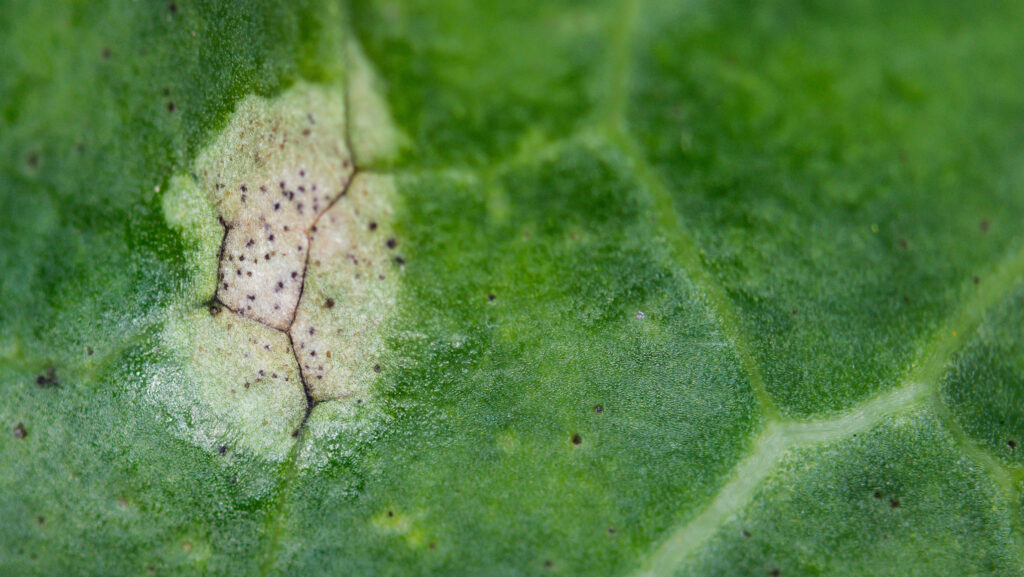OSR growers advised to check crops for phoma
 © Tim Scrivener
© Tim Scrivener Oilseed rape growers have been advised to check crops for phoma, with the first three weeks of October being critical for managing the disease.
The AHDB says the peak onset of phoma leaf spot will be about the middle of October this year, with a third of sites passing the 10% symptom date in the seven-day period that begins on 13 October.
Phoma causes a range of conditions, from leaf spot to stem cankers, and prompt fungicide treatment is vital to combat its spread, thereby minimising yield losses.
See also: How OSR growers will benefit from two new disease genes
AHDB’s online tool uses rainfall and temperature information to forecast when 10% of oilseed rape plants may develop phoma leaf spot symptoms at hundreds of GB sites.
When 10-20% of plants are showing symptoms, the guidance is to treat varieties with lower resistance ratings for stem canker (7 and below), and small crops first.
Sacha White, lead crop protection Scientist, said: “This year, temperature and rainfall have been highly variable over the whole of the phoma forecast period.
“But although the forecast is variable, it shows that spray thresholds for vulnerable crops are most likely to be breached in the next three weeks.
“Because of the variation associated with this year’s forecast, it is even more important to assess symptoms in the field.”
Most oilseed rape varieties on the Recommended Lists (2024-25) have moderate levels of resistance to phoma stem canker (disease ratings of 5, 6 or 7), although two hybrid varieties, Murray and Vegas, have high levels of resistance (disease ratings of 8 or 9).
Fungicides for the control of phoma leaf spot and stem canker have been evaluated for over a decade as part of the AHDB fungicide performance project.
The results show good control can be achieved with two well-timed sprays at half the recommended label rate.
The second application should be considered when reinfection is evident (typically, 4 to 10 weeks after the first application).
There are several modes of action available for the control of phoma leaf spot/stem canker, including azoles (prothioconazole, tebuconazole and difenoconazole) and non-azole options, such as strobilurins (azoxystrobin) and SDHI (bixafen and fluopyram).
As part of a robust resistance management strategy, AHDB advises that modes of action should be used in alternation or as mixtures/co-formations throughout the fungicide programme.
To access the forecast and phoma management information, visit ahdb.org.uk/phoma-leaf-spot-forecast.

© Blackthorn Arable
Top tips for phoma management
As usual, integrated pest management (IPM) is essential for disease-management success, and the timing of any fungicide treatment is particularly critical.
- During autumn, monitor oilseed rape for phoma leaf spots – prioritise susceptible varieties and small crops
- Look on the underside of leaves – if white tufts (mycelium and spores) are present, the symptom is downy mildew, not phoma
- Note that most crops usually start to breach treatment thresholds in October
- Check AHDB fungicide performance data for information on product efficacy against phoma
- A fungicide applied as close as possible to a threshold helps maximise its effect
- Treat varieties with lower resistance ratings for stem canker (7 and below) and backward crops first, when 10-20% of plants have phoma leaf spot
- Only treat varieties with high-resistance ratings for stem canker (8 to 9) if more than 20% of plants have phoma leaf spot
- When reinfection occurs (noted by the presence of new lesions), consider a second spray – typically, four to 10 weeks after the first spray.
- Adjust spray programmes to account for any late-autumn fungicide (November) required for light leaf spot control (consider efficacy against both phoma and light leaf spot).
- Note that late leaf infection or re-infection from December to February is unlikely to warrant control, unless plants are relatively small
- Use a range of mode of actions to maximise control and reduce fungicide resistance risks.
Causes
Phoma leaf spot and stem canker in oilseed rape are caused by two fungal species: Plenodomus lingam (leptosphaeria maculans) and P biglobosus (L biglobosa), which result in yield reductions of between 5% and 50%.
In the UK alone, phoma is estimated to cause about £100m in yield losses each year – despite the use of costly fungicides.

